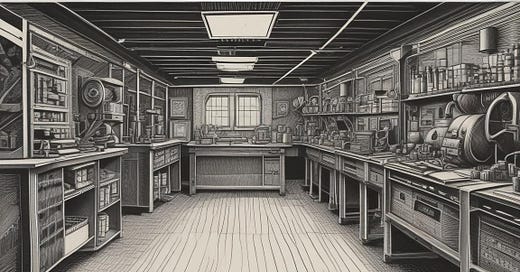So you’re working for a small-scale manufacturing firm, and it feels like you’re constantly up against the "big guys." It’s easy to get caught up in the comparison game, but today we’re going to focus on why being small can be your greatest strength. The truth is, small-scale manufacturing is not only alive and well—it’s thriving. You’ve got key advantages that can set you apart and position you as a top contender in your market.
Small Manufacturing Contributions
Let’s start by looking at some important stats from the National Association of Manufacturers (NAM). Did you know that small manufacturers, defined as those with fewer than 500 employees, account for 44% of the total value added by U.S. manufacturers? Digging deeper, 74% of these firms actually have fewer than 20 employees. What does this mean for you? It means that you’re not alone. Most manufacturing firms are small, just like yours, solving niche problems and adding value in ways the big guys can’t. The landscape is wide open for you to carve out your place and thrive.
Employment in Small Manufacturing Firms
As a small manufacturing firm, you’re not just creating products—you’re creating jobs. Small manufacturing firms employ over 5.3 million people in the U.S., representing about 43% of the total manufacturing workforce. And the opportunities keep growing. In June alone, there were nearly 500,000 job openings in small manufacturing firms. This isn’t just about producing goods; it’s about supporting families, contributing to your community, and driving local economies. The National Small Business Association found that between 2011 and 2021, small manufacturing firms experienced revenue growth of approximately 16%, showcasing their resilience and potential even in competitive markets. Your success isn’t just personal; it’s shared by everyone who relies on the stability and growth of your business.
Innovation and R&D
When it comes to innovation, small manufacturers have a distinct edge. Sure, you may not have the massive R&D budgets that big corporations boast, but what you lack in resources, you more than make up for in agility and creativity. Small manufacturers are responsible for 13% of total private-sector R&D spending in the U.S., according to the National Science Foundation (NSF). That number might seem modest, but consider this: small firms often have innovation baked into their DNA. Every project you take on could lead to a breakthrough, and your flexibility allows you to pivot quickly and implement new ideas that keep you ahead of the curve.
What does all this mean for selling your firm to customers? It means that you are a clear positive choice for your potential clients. You will innovate new ideas to help them solve their problems. You will add value to the economy and your community. You will also employ more people and give more opportunities to those employees. So what is stopping you from getting out there and selling your company to your future customers? Nothing but fear.
Take, for example, **Greyston Bakery**, a small manufacturing firm based in New York. Greyston isn’t just known for their delicious brownies, which are used by companies like Ben & Jerry’s; they’ve also innovated in their hiring practices with an open hiring model that gives jobs to anyone who walks through the door, no questions asked. This unique approach not only fills job openings quickly but also addresses local unemployment, making them a pillar of their community. Their model has gained national attention and is now being replicated by other businesses. Greyston’s success shows that innovation isn’t just about the product—it’s about redefining processes that can lead to broader social impacts and a stronger business.
Action Step
Review your last three completed projects. Identify one example of innovation from each to highlight in a case study. Also, pick one employee from each project to spotlight—reward them personally for their hard work and showcase their contributions on your social media platforms.
Additional Recommended Reading
Small Business Economic Profiles for the States and Territories - U.S. Small Business Administration
Greyston Bakery’s Open Hiring Model
The Competitive Advantage of Small Manufacturers




